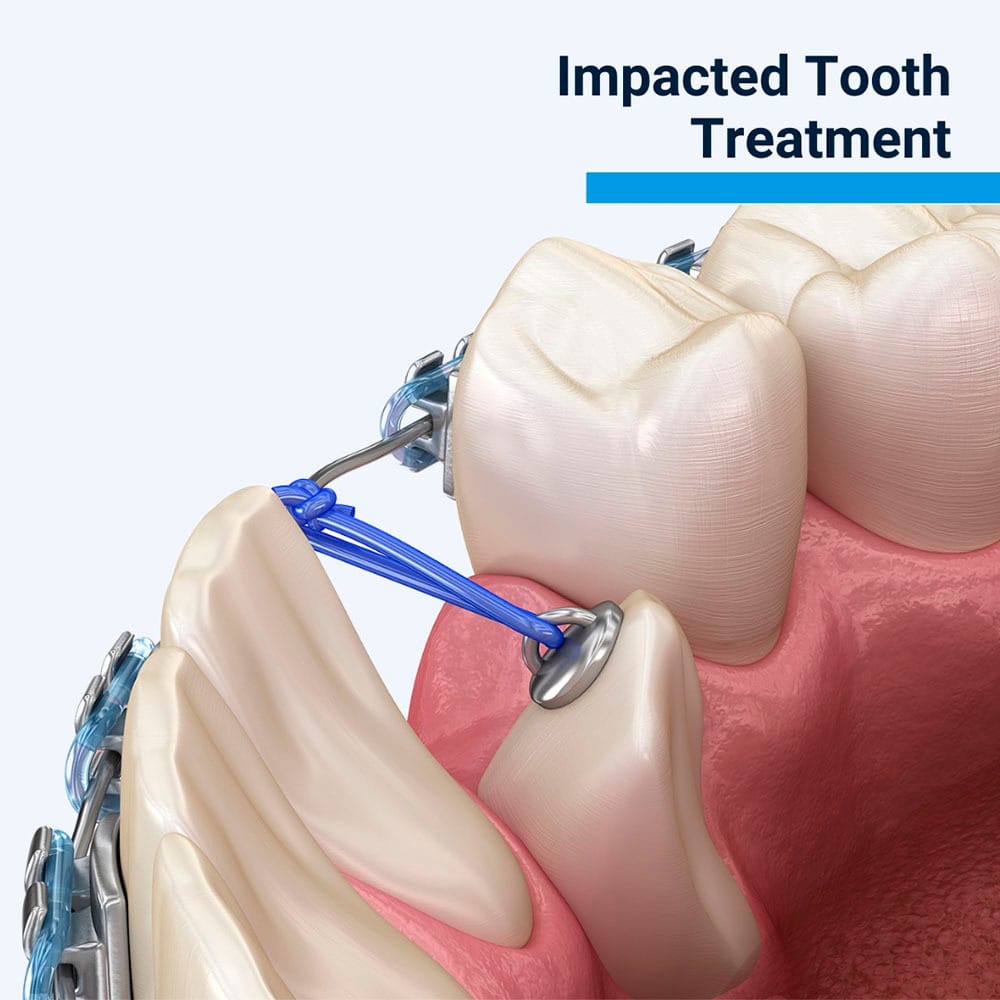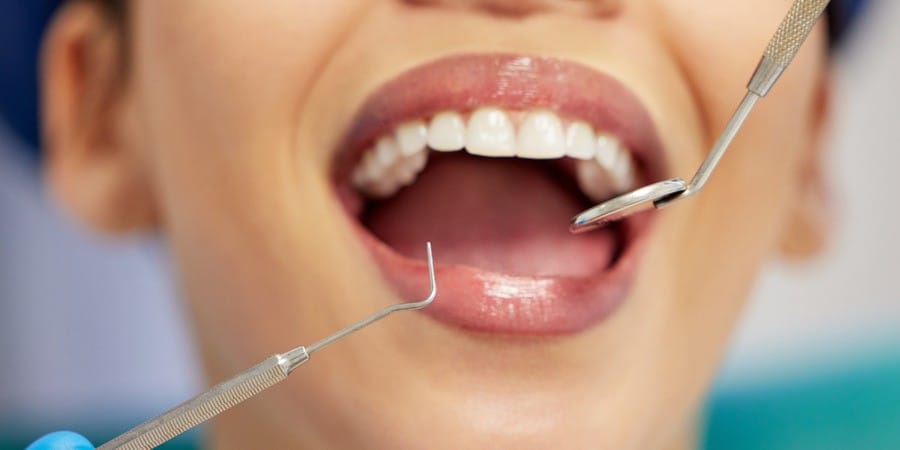What Is an Impacted Tooth?
 We say a tooth is impacted when it cannot erupt fully through the gums and becomes stuck. When a wisdom tooth becomes impacted, it is usually removed because your teeth can function perfectly well without these third molars.
We say a tooth is impacted when it cannot erupt fully through the gums and becomes stuck. When a wisdom tooth becomes impacted, it is usually removed because your teeth can function perfectly well without these third molars.
It is a different situation when a canine tooth is impacted. The canines are important in maintaining your bite, and they have long roots. They help guide the rest of your teeth when you bite them together and are the first teeth to touch when you close your jaws.
The upper canines are the last adult front teeth to erupt, usually around age 13. Most impacted canines are in the roof of the mouth or are above the tooth roots of adjacent teeth.
If a child’s canines are impacted, we will try to expose them and get them to emerge in the right location in the dental arch.
Diagnosing Impacted Canines
Early diagnosis is important as when someone is older, it is harder to get an impacted canine into the proper position so it can erupt correctly, even if enough space is available. When we see children, we carefully monitor the growth and development of their adult teeth using diagnostic digital dental X-rays, including panoramic X-rays.
These diagnostic images allow us to see if all the adult teeth are present in the jawbone and if there are likely to be problems with overcrowding that could prevent them from erupting normally.
Our orthodontist, Dr Jacqueline Simons, can complete an early orthodontic evaluation around age six or seven. Early intervention gives us the best chance of providing appropriate treatment soon enough.
What Happens If Treatment Is Delayed?
If treatment is delayed until a child is in their teens, the impacted tooth could be stuck in the jawbone, and we may not be able to expose it fully. Another problem with delaying treatment is that the impacted tooth can push the adjacent teeth out of place. This can affect the appearance of your child’s teeth and may require more complex orthodontic treatment.
What Is the Treatment for Impacted Canines?
The recommended impacted canine tooth surgery will depend on whether the tooth is stuck in the roof of the mouth or underneath adjacent teeth. Our orthodontist may need to open up enough space to allow the impacted tooth to come through.
Once the space is available, we can expose the impacted canine. After oral surgical exposure of the tooth, an orthodontic bracket is then attached or bonded to the exposed canine.
A small chain can be attached to the bracket and onto an orthodontic brace. Elastics are attached to the chain, gently pulling the tooth into the arch.
We may also need to assess the gum around the tooth. Some situations require gum surgery, particularly if we need to move the tooth some distance.
Impacted Canine Removal
Sometimes, an impacted canine must be removed. This more specialized process needs extensive planning and requires a cone beam CT scan to create a 3-D model of your child’s mouth and teeth.
The cone beam CT scan allows us to identify the exact location of the impacted canine and to plan its removal with minimal disruption to the surrounding tissues.
A small incision is made into the gum to expose the jawbone underneath, and we create a tiny hole in the jawbone to remove the tooth. It may be cut into smaller pieces to make it easier to remove. After the tooth extraction, we clean the area and stitch it shut.
What to Expect after Impacted Canine Tooth Surgery
The above processes might s ound complex, but they are routine procedures. An impacted tooth exposure can be done using a local anesthetic or sedation dentistry to ensure your child feels comfortable and relaxed during treatment. We may recommend sedation dentistry for an impacted canine removal.
After surgical exposure of the tooth or impacted canine removal, your child may experience some minor discomfort, requiring over-the-counter pain relief or prescription painkillers. After the first few days, painkillers should no longer be necessary.
There may be minor swelling around the surgery site, but ice packs can help minimize this. After surgery, it’s best for your child to avoid very hard or shop foods that could irritate the surgery site if they become stuck around the exposed tooth.
For adults undergoing osseous gum surgery, similar care is essential. Osseous surgery involves reshaping and smoothing the bone around teeth affected by severe periodontal disease to reduce pockets and promote healing. Swelling and discomfort are common but manageable with prescribed pain relief and proper post-operative care. Avoiding hard or crunchy foods, maintaining excellent oral hygiene, and attending follow-up appointments are crucial for optimal recovery. Always follow your dentist’s post-surgical instructions to ensure long-term success.
We can give you much more detailed information on how to care for your child’s mouth after impacted cuspid surgery, and our orthodontist will probably want to see your child again a week or two later to begin the eruption process. Contact Clock Tower Dental today to schedule a consultation and learn how we can help your child achieve a healthy, beautiful smile.

